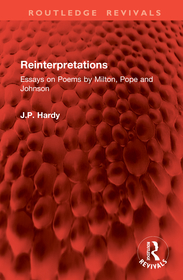
Esoteric Buddhism and Texts
Volume I, Manuscript Culture and Transborder Transmission
- Publisher's listprice GBP 42.99
-
20 538 Ft (19 560 Ft + 5% VAT)
The price is estimated because at the time of ordering we do not know what conversion rates will apply to HUF / product currency when the book arrives. In case HUF is weaker, the price increases slightly, in case HUF is stronger, the price goes lower slightly.
- Discount 10% (cc. 2 054 Ft off)
- Discounted price 18 484 Ft (17 604 Ft + 5% VAT)
Subcribe now and take benefit of a favourable price.
Subscribe
20 538 Ft

Availability
Estimated delivery time: In stock at the publisher, but not at Prospero's office. Delivery time approx. 3-5 weeks.
Not in stock at Prospero.
Why don't you give exact delivery time?
Delivery time is estimated on our previous experiences. We give estimations only, because we order from outside Hungary, and the delivery time mainly depends on how quickly the publisher supplies the book. Faster or slower deliveries both happen, but we do our best to supply as quickly as possible.
Product details:
- Edition number 1
- Publisher Routledge
- Date of Publication 30 July 2025
- ISBN 9781032563237
- Binding Paperback
- No. of pages274 pages
- Size 246x174 mm
- Weight 510 g
- Language English 683
Categories
Short description:
This book explores trans-cultural and cross-border transmission and transformation of Esoteric Buddhism in East Asia, focusing on its manuscript culture and the transborder transmission of Esoteric Buddhist texts. The chapters focus on two major aspects of textual Esoteric Buddhism—its manuscript culture and transborder transmission.
MoreLong description:
This book explores trans-cultural and cross-border transmission and transformation of Esoteric Buddhism in East Asia, focusing on its manuscript culture and the transborder transmission of Esoteric Buddhist texts.
In East Asia, Esoteric Buddhism’s influences can be seen across all levels of society: not only in that it achieved a recognizable sectarian identity, but also because elements of esoteric teachings were absorbed by other religious schools, influencing their philosophical tenets and everyday practices. The influence was not confined to the religious sphere: scholars have been paying more and more attention to the significance of Tang Esoteric Buddhism in relation to material culture and the dissemination of Esoteric Buddhist technologies in South, Central, and East Asia. No matter how one looks at a maṇḍala—an integral feature of esoteric practice—or the uncannily expressive statues of Buddhas, Bodhisattvas or Yidam that come in all shapes and sizes, or the murals that depict the variegated, mysterious themes of the esoteric tradition, one can always recognise the profound connection between art and Esoteric Buddhism. Esoteric Iifluences also abound in East Asian literature across different genres, displaying its unique characters both in poetry and prose. Likewise, in architecture, one can readily make out the enigmatic, colorful and distinctive elements characteristic of the esoteric tradition. Monks initiated into the esoteric lineages not only brought Buddhist classics and practices to China but also advanced knowledge in astronomy, calendarial calculations and mathematical theories.
The chapters in this volume focus on two major aspects of textual Esoteric Buddhism—its manuscript culture and transborder transmission. This book will be beneficial to advanced students and researchers interested in Religious Studies, History and Buddhist studies. It was originally published as a special issue of Studies in Chinese Religions.
MoreTable of Contents:
Part 1: Esoteric Manuscript Culture 1. Dunhuang was not isolated: examples such as ‘Master Yixing sets up earth-wheel lamps’ and others from Yunnan 2. Following medieval Chinese Buddhist precedents with ritual practices using exoteric Buddhist scriptures (kengyō 顕経) from Amanosan Kongōji 天野山金剛寺 and Shinpukuji 真福寺 in medieval Japan 3. Reception and transformation of the Huiji Jin’gang shuo shentong daman tuoluoni fashu Lingyao men: the discovery and significance of medieval Japanese scripture manuscripts 4. A preliminary study on one folio of Tibetan tantric ritual text recently collected by the national library of China 5. Tangut Buddhism and the Bodhicittotpādasamādānavidhi Part 2: Transborder Transmission 6. The Late Tang Esoteric Manual for Abhiṣeka: an introduction, analysis, and translation of the Engyō Nyūdan 7. A (presumably Chinese) tantric scripture and its Japanese exegesis: the Yuqi Jing 瑜祇經 and the practices of the Yogin 8. On the integration of Chinese, Tibetan, exoteric and esoteric Buddhism in the Tangut Kingdom 9. Kūkai’s transcultural rhetoric of prayer: on his writings inspired by the Chinese “prayer text” (yuanwen 願文) 10. Kūkai 空海 (774–835) and Saichō’s 最澄 (766–822) theories on gotra 種姓 (caste)
More




